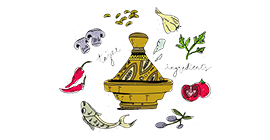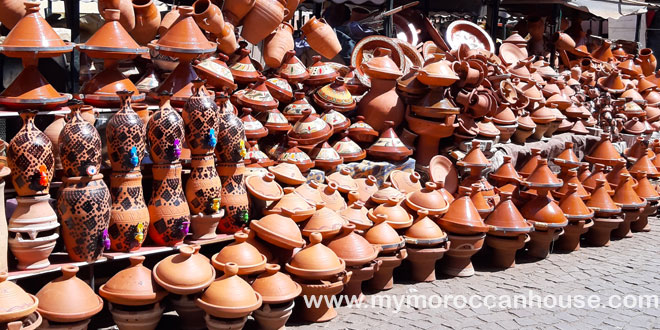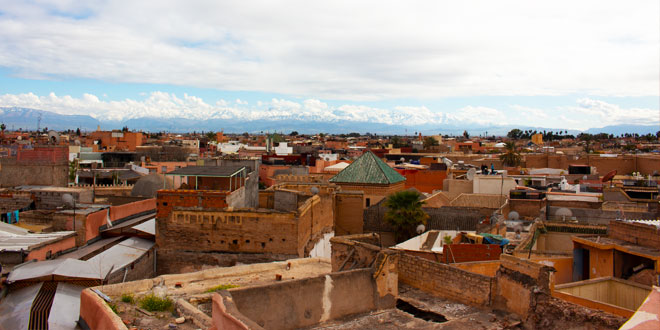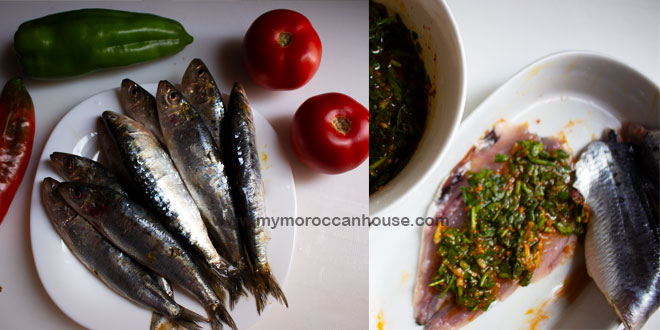You have reached this interesting post as you might be among those who have asked the following questions: when do Moroccans eat? What time do people in Morocco eat? How many meals do Moroccans eat a day? What time is breakfast in Morocco? what do Moroccans eat for breakfast? if so, you have come to the right place.
When Do Moroccans Eat? What Time Do People in Morocco Eat?
We eat three main meals a day in Morocco, sometimes an extra snack in the late morning or late afternoon depending on the families. Meals include breakfast, a late morning snack, lunch, a late afternoon snack, and dinner.
Meals are eaten at home. This is why many restaurants in Morocco might be considered “tourist” restaurants.
During Ramadan, most Moroccans observe the fast during the day, eating only before sunrise and after sunset. Dinner is eaten later than usual and many wake up early for a filling Sohur before dawn.
What Do Moroccans Eat for Breakfast?
For breakfast, many Moroccans have bread with olive oil, jam, scrambled eggs, tea, and different kinds of Moroccan crepes.
Moroccan cuisine is rich and varied, so you might expect these combinations in breakfast meals depending on Moroccan families:
- Black coffee: black coffee is one option, but also café au lait, milk with chocolate can be served.
- Orange juice.
- Eggs cooked in omelets, with freshly ground cumin
- Baghrir: Moroccan pancakes with honey or jam. A sort of pancake, baghrir is smooth on one side and full of little bubbles on the other. Made from semolina and wheat flour, these delectable treats are best served with honey or sugar.
- French pastries Croissants, pain au chocolat.
- Moroccan bread, is often served with butter and jam or olive oil.
- Rghaif Flat, buttery Moroccan pastries.
- Sfenj: Moroccan doughnuts, sometimes with an egg deep-fried in the hole.
- Harsha: A thick, unleavened pancake made from semolina, harsha is best served with honey or cream cheese and is most delicious when hot. There are stands everywhere that sell harsha.
- Melwi is a simple flour-based pancake that can be served with honey or stuffed with onions and spices. It is often sold alongside harsha.
- Petit Pain: A distinctly French treat, “petit pain” is used in Morocco to refer to most French pastries available at breakfast. A typical petit pain is flaky and best served warm.
Lunch is the main meal in Moroccan. Most families eat the midday meal at home together before going back to work.
What Do Moroccans Eat for Lunch?
Moroccans usually eat lunch at home. Lunch is traditionally the biggest meal of the day in Morocco, followed by a nice nap through the heat of the day.
There are plenty of restaurants are open during this time to cater both to foreigners and locals who work and can’t make it home for lunch. Lunch is the biggest meal of the day, and dinner is actually quite light.
A traditional Moroccan meal begins with a large number of starters, consisting of salad, or vegetables flavored with different kinds of spices. Then follows the main course, often couscous or tajine(see p325).
Tajine is a kind of stew made with fish, chicken, beef, or lamb, and may include prunes or almonds. There is a great variety of tajines, which differ according to the region, and it is hardly an exaggeration to say that there are almost as many variations as there are cooks.
All, however, are prepared and served in a terracotta dish with a conical lid; this cooking vessel is called a tajine, hence the dish’s name. Moroccan desserts, especially milk pastilla, are mouth-watering. Meals are
usually eaten with mint tea.
Here is what you might find as a typical Moroccan lunch meal:
Tajine
A tajine is a round earthenware cooking dish with a wide lip and conical lid. A tajine is a thick stew, often tomato and onion-based, and contains meat and different types of vegetables.
Couscous
Quite possibly the Moroccan national dish, couscous is traditionally served on Fridays for lunch. The women prepare the dish while the men are praying at the mosque, and then the family sits down to eat together.
Moroccan couscous consists of semolina grains topped with vegetables and meat. There are several variations, but the most common contains seven vegetables, mostly tubers and squash, and chicken, beef, or fish.
Another popular couscous dish which is called Tfaya is cooked with chicken, cinnamon, and raisins.
kefta
spiced meatballs, and eggs cooked in a tagine.
B’stela “Pastilla”
B’stela, sometimes spelled pastilla, is a delicious sweet and savory dish. It is made of fine layers of pastry, stuffed with pigeon ” or chicken” and almonds, and spiced with cinnamon and pepper. B’stela is usually served on special occasions but can be ordered in advance from many restaurants.
Brochettes
Kebabs with salt and spices, grilled on a skewer and served with bread khubz and harissa (pepper chili sauce), cumin and salt.
Among the most popular varieties are lamb, chicken, kefta (spiced meatballs of ground lamb and/or beef) and the flavourful ‘mixed meat’ (usually lamb or beef plus heart, kidney and liver).
What Do Moroccans Eat for Dinner?
Dinner in Morocco doesn’t usually start until around 7 pm to 9 pm, after work.
Most Moroccans eat dinner at home, but there are exceptions of young professionals, students and bachelors who buy their dinner meals from the local snack or pizzeria.
In winter you’ll see vendors crack open steaming vats of harira – a hearty soup with a base of tomatoes, onions, saffron and coriander, often with lentils, chickpeas and/or lamb.
Dinner at home may often be harira or other kinds of barely semolina soups, wheat soups, vegetarian pasta, salads or easy quick snacks like mini batbout or mini pizzas.
Harira
A thick, spicy, tomato-based soup, harira contains noodles and chickpeas and whatever else is in season. It is served every day during Ramadan to break the fast, but can be found during the rest of the year as an appetizer or a late-night dinner.
What Is so Special About Morocco? Reasons Why You Should Visit Morocco
Morocco is a land of glamorous and vivid contrasts. The gateway to two continents, it is a country of breathtaking landscapes, rich in history and heady with magnific scents and spectacular sights.
While the countryside is home to old traditions and diverse peoples, the ever-growing urban centers boast incredible new architecture together with the old, and activities to suit all modern tastes.
Morocco’s diverse geography, multicultural atmosphere, and rich history make it a mesmerizing country.
Its towns offer a striking contrast of ancient kasbahs, mosques and souks and modern architecture, with a
mix of Berber, Arab and African peoples.
In the crowded ancient medinas, young men in designer jeans haggle over cell phones alongside traditionally dressed women shopping for housewares.
In the fertile countryside, a farmer riding on a goat is as common a sight as a television satellite perched on a mud-brick roof.
Moroccan culture is extremely rich and difficult to pigeonhole. Moroccan landscape includes beaches, mountains, lakes, forests, and deserts.
Morocco is a unique blend of Arab, African, and European ways of life, and the Moroccans wouldn’t have it any other way.
Moroccan cuisine is rich and varied, owing to a variety of cultural influences. Meat is well-spiced and lean, vegetables are fresh and abundant, and everything is permeated with spices.
Moroccan cooking is quite labor-intensive and dishes are pleasingly presented as well as meticulously prepared.
Beef, lamb, fish, and chicken are all popular and used in a variety of dishes. Pigeon and turkey are also available, and the seafood in the coastal cities is not to be missed.
Meat is prepared according to Islamic halal regulations.
Rice, semolina wheat, and barley grains are used for a variety of dishes. A wide range of spices is used, including cumin, saffron, paprika, ginger, cinnamon, red and black pepper, and a special mixture called ras al-hanout is widely used in Moroccan cuisine.
A typical Moroccan meal starts with something fresh or cooked salads, olives and pickled vegetables and bread, and sometimes a cold beverage. The main course is then brought out, usually in a large pot, or tajine.
Moroccans will either eat from the main dish their hands or using spoons, or serve food on to individual dishes.
After the main course is through and plates are removed, various fruits are arranged on the table, and mint tea is served, sometimes with Moroccan cookies.



